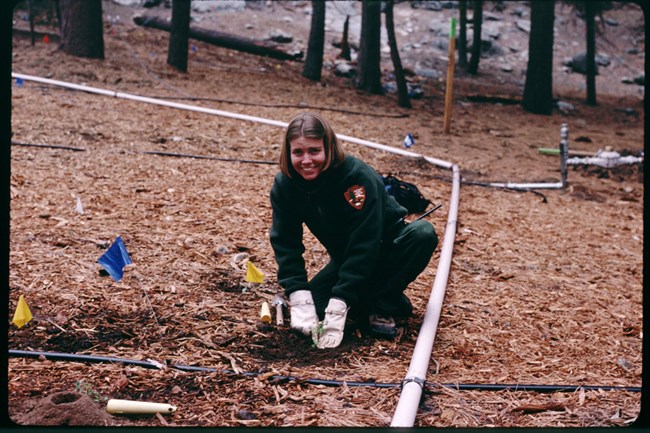|
After a century of human use and development, the forest ecosystem in Giant Forest had changed in several ways. Paved roads, trails, and parking lots changed drainage patterns, allowing water to concentrate and create erosion gullies. Vehicle and foot travel compacted the soil and quickly broke down needles and twigs on the soil surface, depleting the topsoil of organic matter. Groups of mature trees were cleared for buildings and parking lots. Fire, on which giant sequoias depend for regeneration, could not be used in Giant Forest Village. There were very few grasses, wildflowers, shrubs, or tree seedlings in the Village because of lack of fire and human trampling. 
NPS photo Ecological restoration is the process of assisting the recovery and management of ecological integrity. In Giant Forest, the goals of ecological restoration were to:
Ecological Restoration Links
|
Last updated: January 27, 2025
